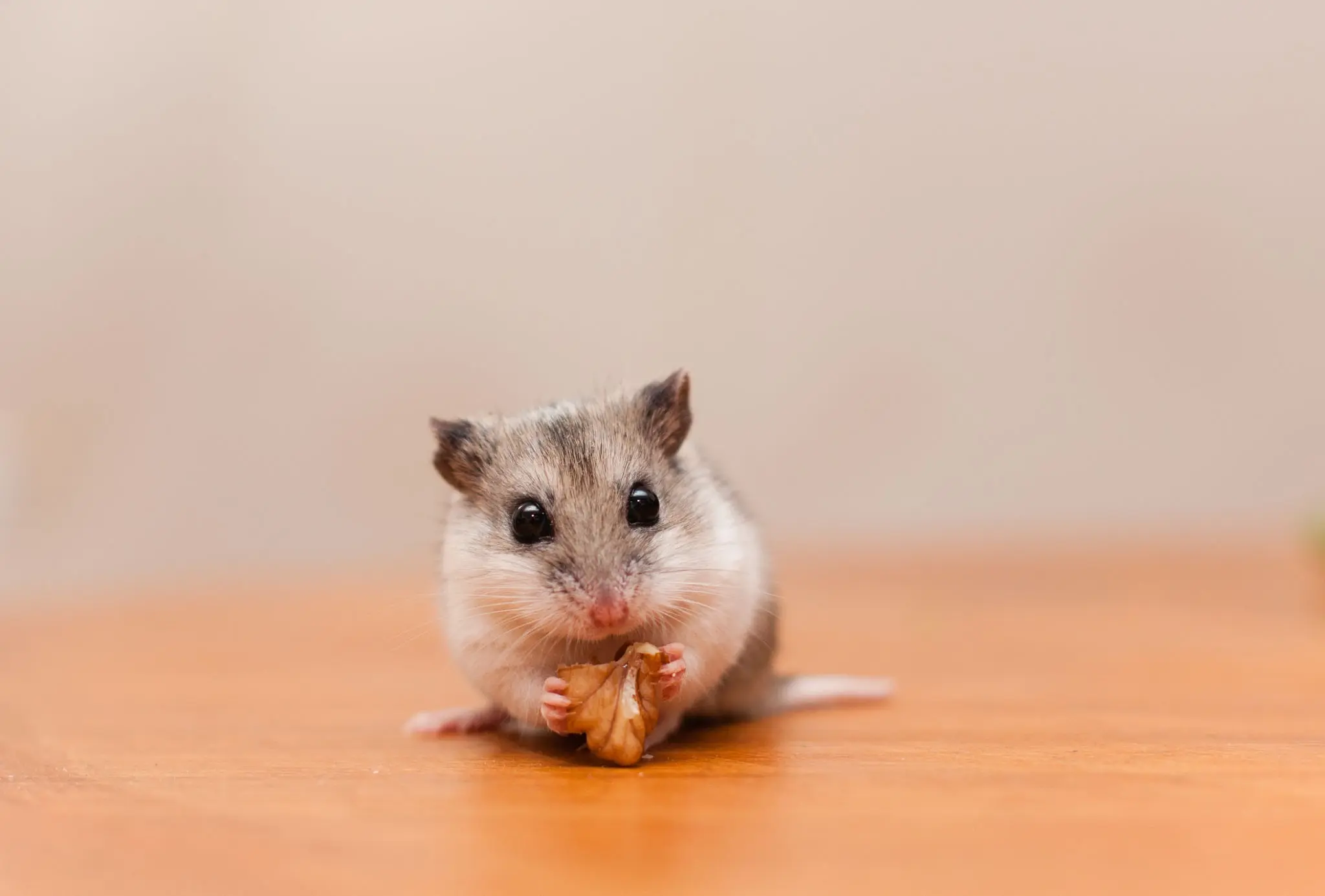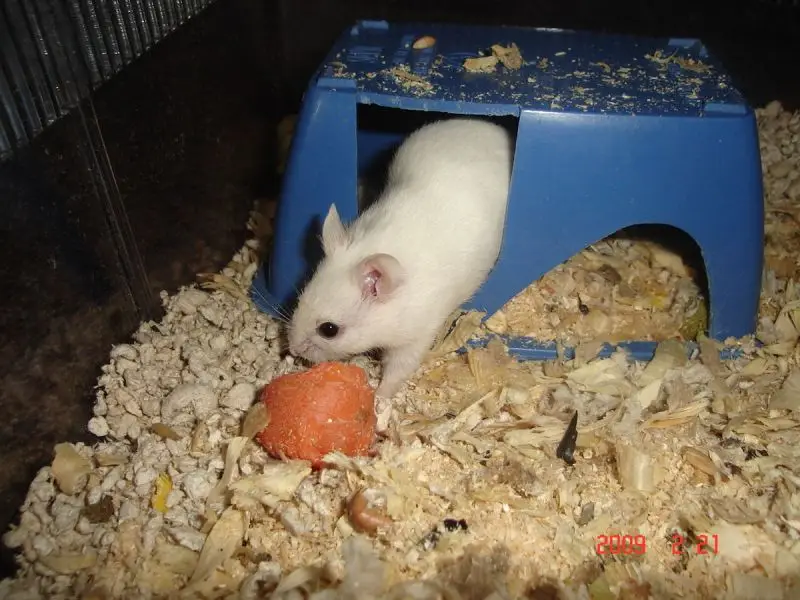Chinese Hamsters are one of the most fascinating small animals you can keep as a pet. They’re gentle and affectionate, with an abundance of personality that makes them a great companion for any household. In this blog post, we’ll explore the unique history, behavior, care, nutrition, training and legal considerations of owning these wonderful creatures. So if you’ve been considering getting your own Chinese Hamster or just want to learn more about them, read on!
Introduction
Chinese hamsters, scientifically known as Cricetulus griseus, are small rodents native to the deserts and grasslands of China and Mongolia. They are part of the dwarf hamster family, but they have a unique appearance and temperament that sets them apart from their cousins. They have become popular pets due to their friendly nature, low maintenance requirements, and small size. Additionally, Chinese hamsters have played a significant role in scientific research, particularly in the fields of genetics and medicine.
Chinese hamsters come in a wide range of coat colors, including black, grey, white, and brown. With proper care and nutrition, these animals can live up to 2-3 years. To ensure these animals remain healthy and active, they need a clean and spacious cage in addition to a healthy diet. This includes providing them with fresh fruits and vegetables as well as commercial products specifically designed for small rodents like Chinese hamsters. You are also advised to change their bedding regularly.

Characteristics and Appearance
Chinese hamsters are small rodents, typically measuring around 4-6 inches (10-15 cm) in length. They have short, dense fur that comes in a variety of colors, including brown, white, black and gray. Some Chinese hamsters may also exhibit a ‘dilute’ gene that gives them a blue or lilac hue. In terms of body shape, Chinese hamsters have a long tail and round bodies with very prominent cheek pouches which they use to store food while foraging. All Chinese hamsters have four toes on their front feet and five on their back feet.
Chinese hamsters can make great pets for children and adults alike due to their nature and small size. They require minimal equipment compared to larger animals such as cats or dogs, making them an affordable option for pet owners who may not be able to invest in more expensive items like cages or litter boxes. Also, they are relatively low maintenance compared to other small rodents such as gerbils or guinea pigs as they only require feeding once per day — though they’ll still need regular attention from their owners to remain healthy and happy.
Behavior and Temperament
Chinese hamsters are solitary animals by nature, preferring to live alone rather than in groups or pairs. They are mostly active during the night, and can become aggressive when threatened. When young, Chinese hamsters can be tamed easily and make great pets for children due to their inquisitive and playful nature.
In addition to their nocturnal habits, these small rodents have a natural instinct to dig burrows in order to feel safe and secure. Though they require minimal space compared to other pets, Chinese hamsters still need a spacious cage with plenty of hiding places such as tunnels or boxes.
When it comes to handling your Chinese hamster try as much as possible to be gentle. These small animals should not be picked up too often as this may cause them stress or anxiety; instead, let your pet come out of its cage on its own terms so that it feels comfortable doing so. Chinese hamsters may bite if they feel threatened or uncomfortable; if this occurs, make sure you give them enough time and space until they calm down before trying to handle them again.

Diet and Nutrition
When it comes to their diet, we recommend a balanced diet of proteins, fats, carbohydrates, vitamins, minerals, and water. As omnivores, they need these nutrients to stay healthy and active. In the wild, Chinese hamsters feed on a variety of items such as seeds, fruits, vegetables, insects, and small invertebrates.
If you want to make things easier for yourself, you can feed them store-bought food pellets specifically designed for hamsters. Most pellets come pre-mixed with all the necessary vitamins and minerals that your hamster requires to function. However, you should still supplement this diet with fresh fruits and vegetables for additional nutrition; fruits like apples or melons are great choices as they offer both sweetness and hydration which are beneficial for your pet’s overall wellbeing. Other good options include carrots and celery sticks which can be used as treats.
Caring for Chinese Hamsters
Caring for Chinese hamsters is essential to ensure they remain healthy and happy. When it comes to their environment, they require a clean and hygienic enclosure with fresh bedding and food.
To ensure your Chinese hamster stays stimulated, provide them with plenty of toys and activities to keep them active. Also, spend time daily with your pet so they get used to human contact.
Providing enough space is also key when caring for Chinese hamsters, as these creatures are naturally active and need room to move around in their enclosure. The cage should be at least two feet square in size with plenty of hiding places such as tunnels or boxes for them to explore.
Finally, caring for Chinese hamsters, watch out for any signs of illness or distress, such as changes in behavior or weight loss. If you notice any concerning behaviors, take your pet to the vet immediately for a checkup. With proper care and attention, your Chinese hamster can live a long and happy life!
Training Chinese Hamsters
Clicker training is an effective and popular method for teaching Chinese hamsters how to respond to verbal commands. This type of training requires the use of a small clicker that emits a sound when pressed, which serves as a signal for the hamster that they have done something correctly and will receive a reward. Clicker training eliminates the need for physical punishment, as it encourages positive behavior using rewards such as treats or praise. It can take weeks or months for a hamster to learn new commands or activities. So, be patient and consistent when introducing them.
Creating an enriching environment where your pet can thrive is just as important as any form of formal training. Make sure their cage is spacious enough for them to explore, provide toys that stimulate their senses, and give them plenty of time out of their cage during playtime each day. This approach ensures that your pet remains happy and healthy while also teaching them good behaviors that are beneficial to both the animal and its owner.
Common Health Problems in Chinese hamsters
Chinese hamsters are small, docile animals that make great pets for children and adults alike, but they can suffer from a variety of health problems if not given proper care. Common health issues in Chinese hamsters include respiratory infections, diabetes and kidney disease, obesity, cystic ovaries, and eye problems such as glaucoma, cataracts, and retinal detachment.
Respiratory infections
Respiratory infections are the most common health issue faced by Chinese hamsters. These can be caused by viruses or bacteria that live in the environment or are passed between animals through contact. Symptoms may include sneezing or coughing, discharge from the eyes or nose, labored breathing, and lethargy. Treatment usually involves antibiotics prescribed by a veterinarian.
Diabetes
Diabetes is another common health problem among Chinese hamsters. It is caused by an imbalance in the body’s ability to produce insulin which leads to high levels of sugar in the blood. Symptoms of diabetes include excessive thirst and frequent urination as well as weight loss despite eating more than usual. Diabetes must be treated with insulin injections prescribed by a veterinarian; failure to do so can lead to serious complications such as blindness or death.
Obesity
Obesity is also a concern for this species due to their small size; extra weight puts strain on their organs and joints which can cause serious medical issues over time if left untreated. To prevent obesity it is important to provide a balanced diet with an appropriate calorie intake for your pet’s size and activity level as well as providing plenty of opportunity for daily exercise inside their cage or play area outside of it.
Cystic ovaries
Cystic ovaries are another potential issue in female Chinese hamsters; this condition occurs when ovarian cysts form which prevents eggs from being released properly during mating season leading to infertility in some cases. Symptoms may include lethargy, lack of appetite, irregular heat cycles or no heat cycles at all- these should be discussed with your veterinarian who will recommend treatment options based on your individual situation if necessary.
Eye problems
Finally, eye problems such as glaucoma (increased pressure within the eye), cataracts (clouding of the lens), and retinal detachment (separation between layers of cells that line the back wall inside the eye) can occur in Chinese hamsters due to age-related changes or trauma caused by rough handling or falls from high places within their environment; these conditions require medical attention if identified early enough, so regular checkups with your vet are recommended even if no symptoms have appeared yet.
To ensure the best possible health for your Chinese hamster it is important to provide them with a balanced diet made up primarily of store-bought food pellets supplemented with fresh fruits and vegetables alongside monitoring their food intake to prevent overeating; Additionally regular veterinary checkups should be part of any pet owner’s routine in order catch any potential illnesses before they become serious enough to cause permanent damage
Recommended Habitats
Chinese hamsters require a secure and spacious habitat in order to live comfortably. The ideal size for their enclosure is between 3-4 square feet, with plenty of space for them to explore and climb. It is important to keep the environment at the correct temperature range of 65°F to 75°F, as any changes in temperature can cause stress and illness.
When it comes to toys and items for your Chinese hamster to chew on, there are many options available. Wooden blocks, bird toys, paper rolls, cardboard boxes, etc can all provide hours of entertainment and help prevent boredom. Also replace these items regularly, as they get chewed up by your pet’s chewing.
Finally, it is important to remember that Chinese hamsters are solitary animals who need their own space and should not be housed with other animals. Keeping multiple animals together can lead to territorial disputes which can cause stress and even injury. Best practice is to only keep one Chinese hamster per habitat/environment in order to ensure their safety and wellbeing.
Breeding and Reproduction
Chinese hamsters are capable of breeding throughout the year, with females reaching sexual maturity at 4-8 weeks old and males at 6-10 weeks. Once mature, they can produce litters of up to 8 pups after a gestation period of 15-18 days. If you decide to breed your Chinese hamsters, it is recommended that you wait until they reach 8-12 months old for females and 10-14 months old for males, as this is when they are most likely to produce healthy offspring.
After mating takes place, separate the female from her mate. She should be given a separate enclosure where she can build a nest and care for her young without distractions or interference from other animals. It’s important that she has access to fresh food and water during this time.
Once born, the pups should remain with their mother for at least a month before being separated into individual enclosures or rehomed with other family members or friends who have experience caring for small rodents. Before rehoming any Chinese hamster pups, it is important to ensure that all legal requirements are met and all ethical considerations are taken into account, such as researching local laws on keeping exotic animals as pets and only buying from reputable breeders or rescue organizations.
Legal and Ethical Considerations
Owning a Chinese hamster is a rewarding experience, but it’s important to be aware of the legal and ethical considerations that come along with it. Depending on where you live, there may be restrictions on owning Chinese hamsters, such as needing a special permit or license from your local government. You may also need to have your Chinese hamster spayed or neutered in order to comply with legal regulations. Additionally, some states may require that all pet owners register their animal with the state health department.
It is also important to make sure that you are purchasing your pet from an ethical breeder or rescue organization. It is illegal in many countries to buy animals from pet shops or other sources that do not adhere to humane standards of care for their animals. Research should be done into any laws surrounding exotic pets, as these can differ significantly depending on which state or country you live in.
If you plan on taking your Chinese hamster outside, you may need to purchase liability insurance. This insurance will protect both you and your pet if any accidents occur while yoy are out and about. Please double-check the laws in your area to ensure that you are compliant with all regulations and that your pet is safe and well cared for.
Conclusion
Chinese hamsters are a unique species that make great pets for both children and adults. They require a specific environment and diet to stay healthy, as well as regular attention. It is paramount to do your due research before obtaining one of these animals, taking into account legal and ethical considerations such as only buying from ethical breeders or rescue organizations.
With the right environment and care, Chinese hamsters can remain healthy and happy for years to come.
